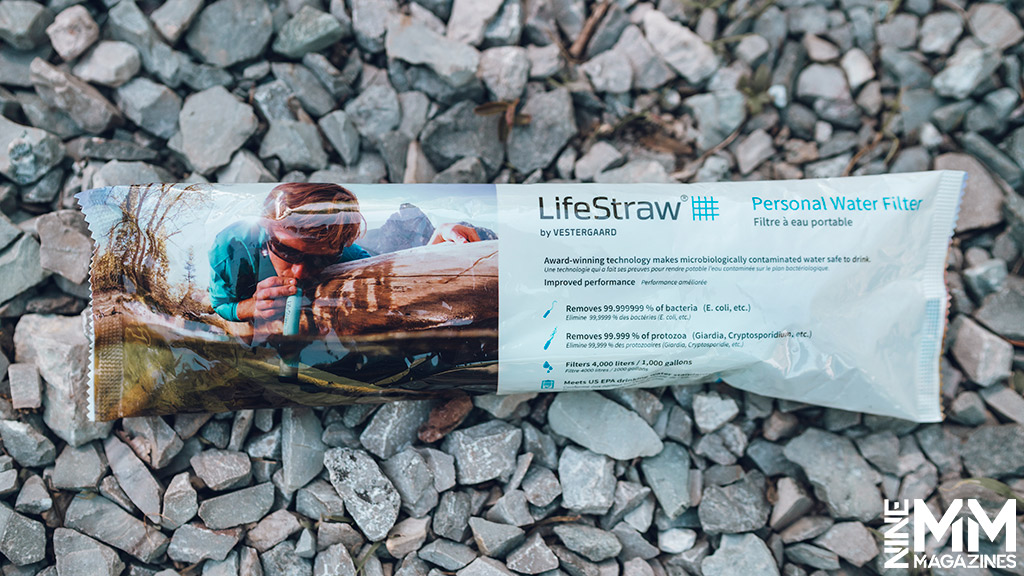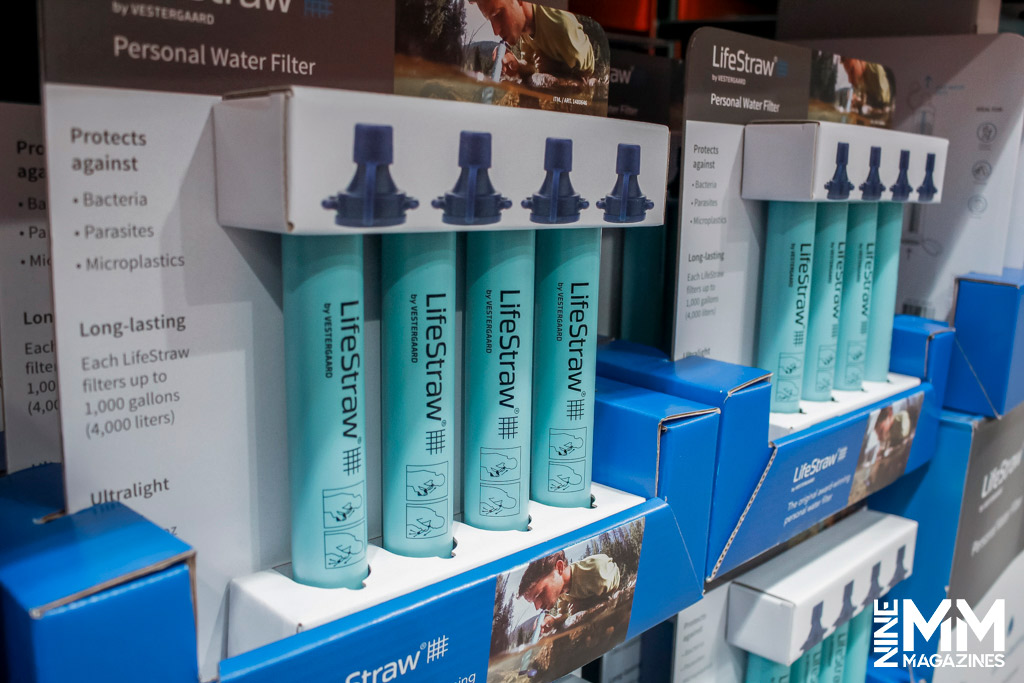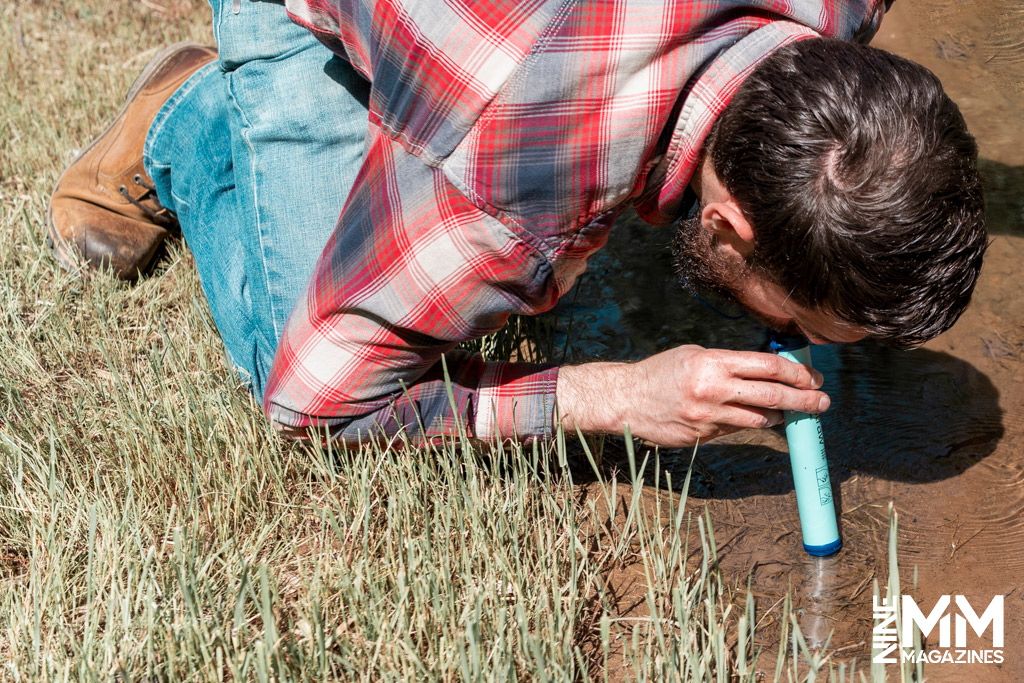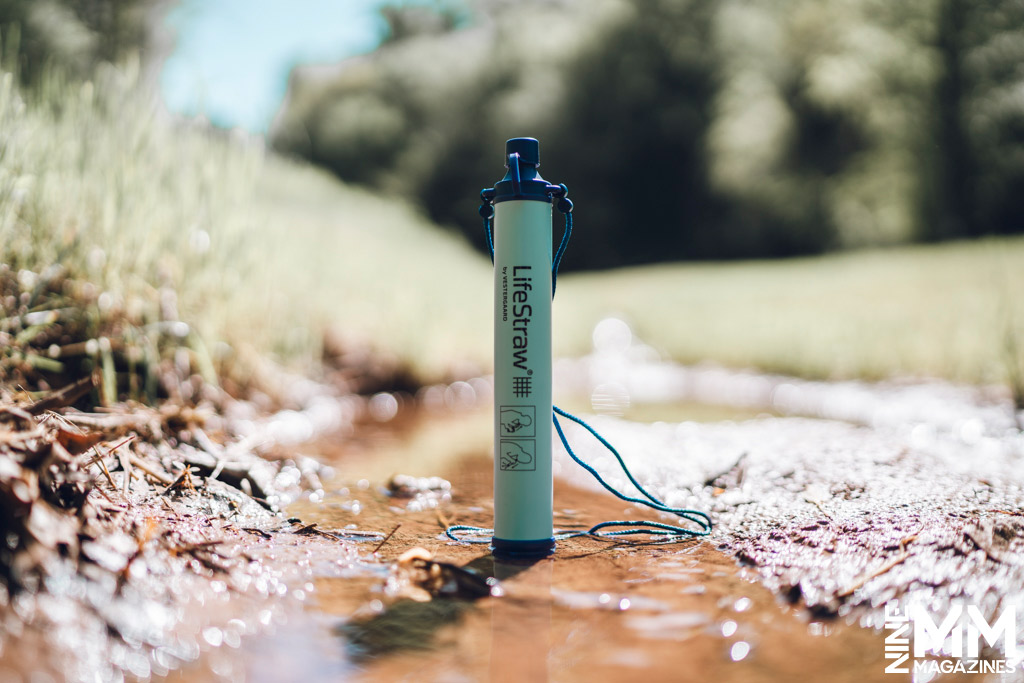
Lifestraw Review
Disclaimer: This page contains affiliate links, meaning we receive commissions for any purchases made through the links on this page.
Perhaps you’ve heard of the Lifestraw, or maybe you’re just looking for a personal water filtration unit that’s easy to carry while you’re on the go. Either way, you’re in the right place to find out everything you need to know in our Lifestraw review. From your hiking backpack to a survival kit in your trunk, it’s a device that lets you obtain clean water immediately and is a great tool to keep on hand.
For those in a hurry, the Lifestraw is a hollow membrane filter built around a straw. You open it and place one end in the water, and the other in your mouth. While you draw the water up, the filter removes 99.9999% of bacteria, and 99.9% of protozoa, down to 0.2 microns. It lasts for around 4,000 liters of filtration depending on the environment it is used in.
This Lifestraw review will discuss the features, benefits, and drawbacks of the device.
What Does The Lifestraw Do?
This water filtration device is a light, portable, and reusable way to obtain clean water. It’s small, easy to store and carry, and ready to use. With all the issues in the world today, many people have started to stockpile emergency supplies such as food, water, batteries, and fuel. Water is notoriously heavy and unwieldy to move or store, making filtration devices more practical for a bug-out bag or mobile survival kit.
That’s where the Lifestraw comes in.
Lifestraw Review: Benefits & Features

Small, Compact Filter: Removes Bacteria & Parasites:
The Lifestraw’s microfiltration membrane removes 99.999999% of waterborne bacteria (including E. coli and salmonella) and 99.999% of waterborne parasites (including giardia and cryptosporidium), making the water pathologically safe to drink. It’s not rated to remove microscopic-level (inorganic) minerals or viruses. It is also not certified to remove chemicals such as chlorine or lead.
Removes Microplastics From Water:
Never worry about microplastic contamination again. The Lifestraw removes the smallest particles of microplastics found in water, down to 1 micron.
Lifestraw Backs Up Its Claims:
Using standard testing protocols set by the US EPA, NSF, and ASTM for water purifiers, laboratory tests verify Lifestraw’s filtration claims.
Filtration Capacity:
The Lifestraw portable and reusable filter will purify 4,000 liters (1,000 gallons) of water with proper use and maintenance. That’s a lot of clean water in a small package!
The Lifestraw Is BPA-free:
All components of the Lifestraw, including the plastic casing that houses the ceramic filter, are free of BPA.
Lifestraw Review: Pricing
A single Lifestraw hovers around $17-$20 on Amazon, but you can get a better deal if you buy a multi-pack. Keep one in your home, vehicles, and survival kit!
Does The Lifestraw Work as Advertised?

It’s hard to believe that something so small can filter so much water. It’s also hard to believe that dipping it into scummy, stagnant water crawling with mosquito larvae and green with algae will yield pleasant results. Everything inside me screamed not to drink it.
Nonetheless, I dipped the right end in, let it sit a moment to wet the filter, and then sucked on it like a straw. I chose to test it on a stock tank in one of my sheep fields. It’s been there, gathering critters, for weeks. But since it’s mainly in the shade, it was a respectably cool temperature. After enough suction to prime the filter, I got…plain, drinkable water.
Does The Water Still Have Flavor?
The Lifestraw focuses on removing microbial contaminants from water, not chemical ones. For their water bottle filtration setups, they offer a charcoal filter add-on that filters out chemicals like chlorine and improves its flavor. I tried the Lifestraw on both stagnant and swimming pool water, assessing the final taste of each.
When I tested the scummy water, green with algae and rife with bugs, I couldn’t tell it apart from what I get from my kitchen sink. We have a charcoal filter system for the house, so that’s saying a lot. Then I dipped it into the swimming pool and gave it a few sips. Though Lifestraw doesn’t advertise it as removing chemical flavors, it did reduce it. I still wouldn’t want to drink pool water with it, though.
(Always remember not to use the Lifestraw on water that could be chemically contaminated, such as anything near a chemical plant or mining operation.)
Who Should Use the Lifestraw?

Unlike many survival tools that some people don’t see the need for, this is something anyone can use in an emergency. It’s simple enough for young children to use, and there are no special instructions you need to remember in a crisis. Simply pop the caps, dip the Lifestraw into any body of water, and suck it like a straw.
If you hike, camp, or travel in remote areas, it’s a must-have. I’d argue it also belongs in every glove box or home emergency stockpile. If you ever break down, find yourself stranded, or lose electricity for an extended period, this one small item can prevent the risks of dehydration. Dehydration and hypothermia are the most serious risks in any survival situation.
Any Drawbacks To The Lifestraw?
Let me first address that using the Lifestraw can be a bit tricky. I think the easiest way to use it is to collect the water you want to filter in a container or bowl. Otherwise, you’ll have to lay flat on your stomach in front of the water source to draw water into the device. If you’re in a city with undrinkable water, because of a disaster, your best bet is to collect the water in a sink, or bathtub to begin purifying it. Or, if you’re out in the woods, try collecting the water on a tarp to begin purifying it.
If you’re on the move, you can’t pre-filter any water and carry it with you. In that sense, it’s best suited to boating, kayaking, or tubing, where you’re always next to the water. For hikes and other long treks, Lifestraw offers water bottle filtration units. With these, you fill the bottle and filter it as you keep moving. You can also fill a separate container and use the Lifestraw to drink it.
There’s also no way to see how much of its life you’ve used up. While 1,000 gallons sounds like a lot, it goes fast if you use it regularly. (The Lifestraw will stop working when you reach the end of the filter life, so you don’t have to worry about using it past its effective life.)
Accessories, Anyone?
The clips that hold the paracord loop to the top of the Lifestraw aren’t overly sturdy. I don’t think it’s meant to carry around that way – it’s more a safety measure so it doesn’t slip from your hand and drift away while holding it in the water. If you apply much force, the clips pop off, so the string can’t strangle you if it snags on something.
Finally, the plastic casing isn’t overly sturdy. The easy solution is to buy the hard shell case Lifestraw makes to keep it in, so it won’t get cracked bouncing around in the bottom of your pack. It would be nice if it came with a case, but hey.
Lifestraw Review: Conclusion

The Lifestraw is a simple, easy, ingenious method for making any biologically sketchy water safe to drink. It works instantly and requires no training to deploy in any environment. It’s perfect for backpacking, or disaster survival. Everyone who doesn’t want to drag extra weight with them on a hike or wants to be prepared if the power grid fails should have one or two of these.
My overall rating of the Lifestraw Personal Water Filter: 4.5/5 
Sara is a published writer, editor, and firearms enthusiast. She lives with her husband on their small farm in West Virginia.

